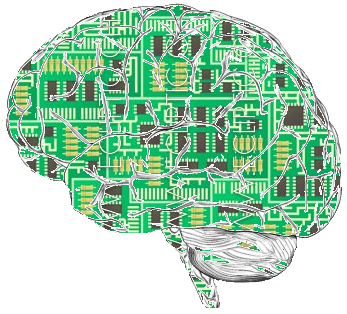Ghost in the Machine (DJ Defwheezer)
 Military Builds Brain-like computers; Making electronic circuits that mimic brains.
Military Builds Brain-like computers; Making electronic circuits that mimic brains.
TIMESTAMP 2009. A milestone has been reached in Artificial Intelligence Evolution- The reverse engineering of the structure, dynamics, function and behavior of the biological brain. Under the auspices of the Defense Advanced Research Projects Agency (DARPA), the ambitious effort deconstructed biological systems and allowed successful computer simulation of complex neuronal activity.
Military funded Neuro scientists using multi-nodal brain probes linked to supercomputer clusters, have developed detailed wiring diagrams of primate brains.
Current supercomputer clusters can simulate the complexity of the human brain- basically simulations of some 100 billion neurons making upward of 100 trillion dynamic synapses. Recent breakthrough in quantum computing mated with nano technological structures (details of which are currently deemed highly classified by the National Security Agency) are producing synthetic brains matching the density of neurons and synapses from real brains .
In the late 20th century, neural network algorithms (pdf) were used to represent connections analogous to biological neurons. These neural network were programmed to solve a particular problem - behaviour that is analogous to learning. The biological brain, however, not so much a neural network as it is a true synaptic network.
The limitation of traditional neural networks and artificial intelligence are that they seek to engineer limited cognitive functionalities one at a time, starting with an objective and then devising an algorithm to achieve it.
The paradigm shift has occurred via the development of highly flexible and self annealing algorithms that can retrospectively learn, and dynamically tackle problems prospectively.
The adaptability of biological brains lies in their ability to tune synapses, the connections between the neurons. Synaptic connections form, break, and are strengthened or weakened depending on the signals that pass through them. Development of nano-scale materials that fit that description has been a major breakthrough of the project.
The fundamental shift toward putting the problem-solving before the problem makes the potential applications for these new devices practically limitless.
Free from the constraints of explicitly programmed function, computers now gather together disparate information, weigh it based on experience, form memory independently and solve problems in a way that has previously been the exclusive domain of what humans call "thinking".
Size: 6,611,581 Duration: 6:41 Audio File: mp3

1 comment:
Post a Comment